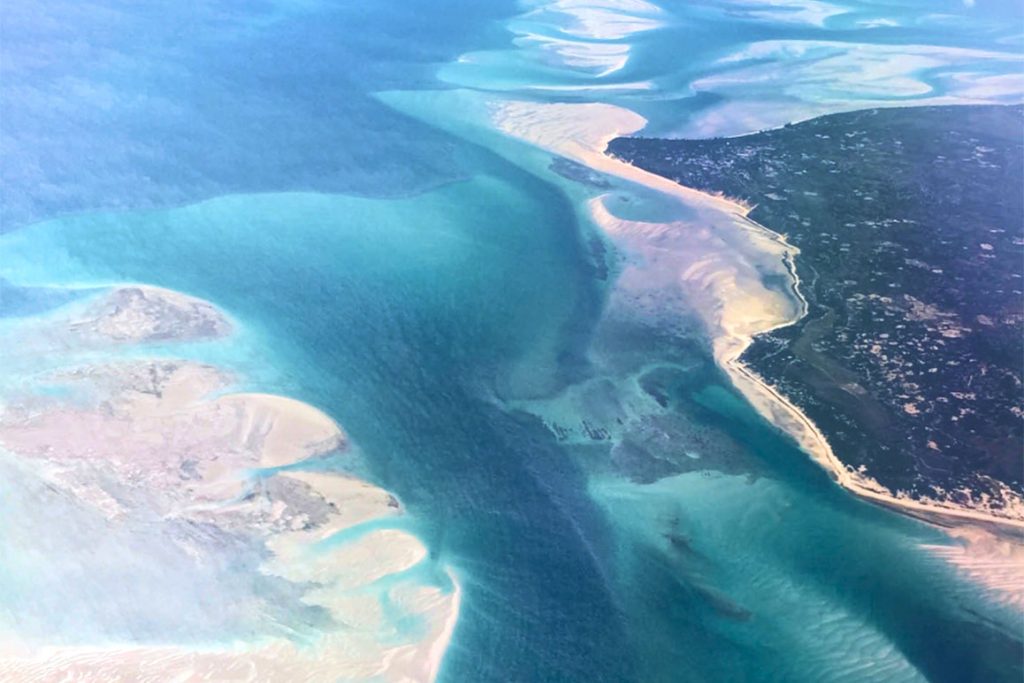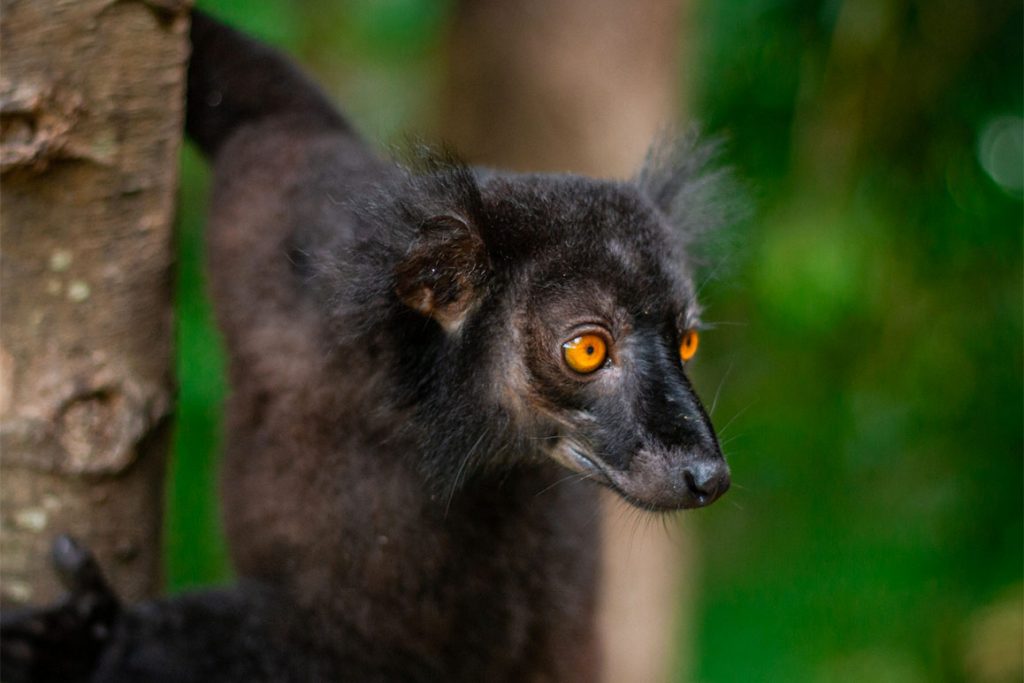- Overview
- Itinerary
- Accommodation
- Rates
- Included
- Excluded
- Flights
- Sustainability
- Gallery
Immerse yourself in the footsteps of giants
Take a life-changing 5-day Expedition tracking desert-dwelling elephants across Namibia’s Damaraland - one of the world’s last remaining true wildernesses. A place of contrasts, a seemingly barren desert landscape that’s teeming with life. Spend your first night at the base camps open-air treehouse and subsequent nights outdoors at mobile camps. Learn about elephant conservation around campfires under the Namib deserts' vast starry skies.
Expect the unexpected
Your 5 day, 4 night trail traverses Namibia’s prehistoric watercourses, scenic open plains and grasslands, past granite rock formations and distant mountains. This unique Expedition includes 3 nights of camping in remote locations as you follow the paths of desert elephants. A vehicle will drive your gear to each camp site, where staff will prepare camp and meals for the group.
Experience the untold beauty of Damaraland
Damaraland is a tribal wilderness area that runs parallel to the iconic Skeleton Coast National Park in Namibia. Witness the uniquely adapted elephants, lions and giraffes in their natural environment. You might also spot black rhino, oryx, brown and spotted hyena, leopard, cheetah and more.
Trek across desert landscapes
Adventure through the Namib desert, where you’ll contribute to important elephant research and conservation efforts. Track and monitor elephants, collect data on herd movements, take photos for our database, and record information such as births, deaths and injuries
Namibia’s Desert Elephants
Desert-dwelling elephants are actually the same species found in many safari destinations on the continent. But the battle for survival in the desert often leads to conflict, as elephants search for water in human settlements. On this Expedition, you’ll learn about critical conservation efforts to protect this unique elephant population and reduce human-elephant conflict.
See the itinerary for an example of what you can look forward to >
Physical rating: 4/5.
Moderate physical activities are included and a good level of fitness is required.
When you’re trailing elephants, no two days are the same
Each day holds its own suspense, adventure and surprises. But one thing is guaranteed – magic. Every day on your expedition will be a combination of exciting conservation activities, safari experiences and relaxation. Greet each sunrise with a hot cup of coffee or tea. Head out for a day of elephant tracking and conservation activities. At the end of each day, you’ll enjoy a delicious meal together and sit around the campfire to share stories under the stars.
The following itinerary is an example of the activities and project work that participants might get involved in on this Expedition.
Itineraries
Day 1
Arrive at base camp

Journey from Swakopmund on Namibia’s Skeleton Coast to our desert home base, set in the shade of towering trees. Your home for the afternoon and evening is our tree house platform, an open wooden structure.
Introduction to the project
Experience the crisp desert air and listen for the distant sounds of wildlife. Our introduction briefing includes a presentation on human-elephant conflict and the valuable work being done to conserve these unique elephants.
Dinner and stargazing
Enjoy a dinner cooked over the fire. Once the sun is down, the night sky fills with millions of stars. Learn about local beliefs of the night sky and constellations.
Days 2-4
Elephant Conservation and more

Elephant tracking
Following a restful night in the tree house, we’ll begin our trek on foot through the breathtaking desert landscape. For the next three nights you’ll sleep wild under the stars in remote locations, your movements dictated by the elephants.
Local knowledge
During the day you’ll track and learn about desert-dwelling elephants, the unique challenges faced by this small population, and the arising human-wildlife conflict in the area. Meet the community members who live side by side with the desert’s wildlife.
Critical ecosystems
Your devoted expedition guides will impart their incredible knowledge on tracking skills, elephant behaviour and their complex society, as well as information on all the other wildlife and flora to be found in this unique ecosystem.
Community engagement
You’ll visit the local primary school and surround farms, where solar-powered water pumps have been installed to reduce conflict with elephants. These structures protect water sources for community members, while protecting the elephants.
Conservation work
Alternative water sources have also been developed for the animals. As part of this immersive experience, you’ll learn all about these activities and the ways we’re working to conserve elephants and support local communities.
Winding down
Each evening we’ll wind down around the fire and enjoy a cooked meal. Listen to your guide’s stories about the stars and night sky, and discuss elephant conservation and Namibia’s history and culture.
Day 5
Departure

It's not goodbye…it's see you again soon!
On your last morning, we'll wake up and enjoy a hot coffee or tea before packing up camp. We'll learn and practice leaving no trace principles wherever we camp, allowing us to traverse this landscape without leaving our mark.
Journey onward
Guests will be taken back to our base camp, where you’ll enjoy a hot traditional breakfast and an opportunity to freshen up. Then it’s time to head back home or onward for the next part of your African bush adventure!
Wild and immersive

Accommodation on this Expedition is authentic and wild, connecting you with nature. Your first night is spent at base camp, where you’ll experience GVI's unique open-air treehouse. Listen to the night sounds of the Namib Desert from a safe, raised platform.

When you’re on trail, you’ll experience wild camping at our mobile camps, including tents or bed rolls under the stars.

From $400* per person, per night, sharing based on a minimum of 4 pax
*Valid 2024. This daily rate is an indication only as prices may vary according to your specific requirements. A quotation for the full duration of this trip will be emailed to you after submitting the Trip Enquiry.
Terms: All bookings are subject to availability and single supplements may apply.
- Conservation activities
- Guided drives, hikes and walks
- Highly qualified and experienced trackers and conservationists
- Accommodation in base camp tree house and mobile camping
- All Meals
- Pre-departure support
- 24-hour Emergency desk
- Arrival and departure transfers.
- Flights (see tab to book flights)
- Visas
- Vaccines
- Medical insurance
- Travel insurance
- Personal belongings insurance
- Cancellation insurance
- Personal gear and kit
- Soft drinks and alcoholic beverages
- Additional spending money
- Gratuities.
You will need to book your own international flights to and from Namibia's Swakopmund Airport (SWP).
Our handy airline aggregator will find the best seat prices for your dates.
Note:
- We strongly advise waiting to book your flight until your Expedition trip is confirmed, as we need a minimum number of participants to proceed.
- You can always come back to this tab and book flights later.
- If you decide to book flights earlier, please opt for flexible tickets to accommodate potential changes.
Sustainable Development Impact
While the United Nations Sustainable Development Goals (SDGs) are global concerns, and not aimed specifically at the travel and tourism industry, target 8.9 of the 2030 Agenda aims to "by 2030, devise and implement policies to promote sustainable tourism that creates jobs and promotes local culture and products". In this regard, tourism has the potential to contribute, directly or indirectly to all 17 SDGs.

Travel with Purpose
GVI Global’s expeditions and volunteer programmes address all 17 SDGs. In particular, GVI prioritizes 10 critical global issues affecting both people and the planet:
- Plastic pollution and litter,
- Climate change,
- Endangered species,
- Biodiversity loss,
- Sustainability,
- Early childhood development,
- Education for both children and adults,
- Gender equality,
- Health, and
- Justice, equity diversity, and inclusion.
Considering the track history and documented evidence of GVI's commitments to conservation and community upliftment, Naturecrazi considers their respective SDG "qualifying criteria" as follows:
- SDG 1: Creates fixed term and permanent job opportunities for local communities and aims to support people harmed by climate-related extreme events and other economic, social, and environmental shocks and disasters.
- SDG 2: Aims to end hunger, achieve food security, improve nutrition, and promote sustainable agriculture.
- SDG 3: Ensures healthy lives and promotes well-being for all at all ages.
- SDG 4: Contributes to sustainable local community development through education programs and research.
- SDG 5: Aims to achieve gender equality by ending all forms of discrimination, violence, and any harmful practices against women and girls.
- SDG 6: Provides for careful handling and disposal of solid waste and sewage. Uses alternative, sustainable means of water acquisition and reduces water consumption.
- SDG 7: Meets its energy needs through passive design and renewable energy resources.
- SDG 8: Promotes economic growth, full and productive employment, and decent work for all.
- SDG 9: Builds resilient infrastructure, promotes sustainable industrialization, and fosters innovation.
- SDG 10: Reduces inequality within and among countries.
- SDG 11: Makes human settlements inclusive, safe, resilient, and sustainable.
- SDG 12: Encourages sustainable consumption and production patterns through various measures, including the management of materials that are toxic to the environment.
- SDG 13: Takes urgent action to combat climate change and its impacts by improving education and awareness-raising on climate change mitigation, adaptation, impact reduction and early warning.
- SDG 14: Conserves and sustainably uses the oceans, seas and marine resources for sustainable development.
- SDG 15: Conserves and rehabilitates the surrounding flora and fauna. Aims to protect, restore, and promote sustainable use of terrestrial ecosystems, sustainably manage forests, combat desertification, and halt and reverse land degradation and halt biodiversity loss.
- SDG 16: Aims to promote peaceful and inclusive societies for sustainable development, provide access to justice for all, and build effective, accountable, and inclusive institutions at all levels.
- SDG 17: Aims to strengthen the means of implementation and revitalize the global partnership for sustainable development in 2030.

























